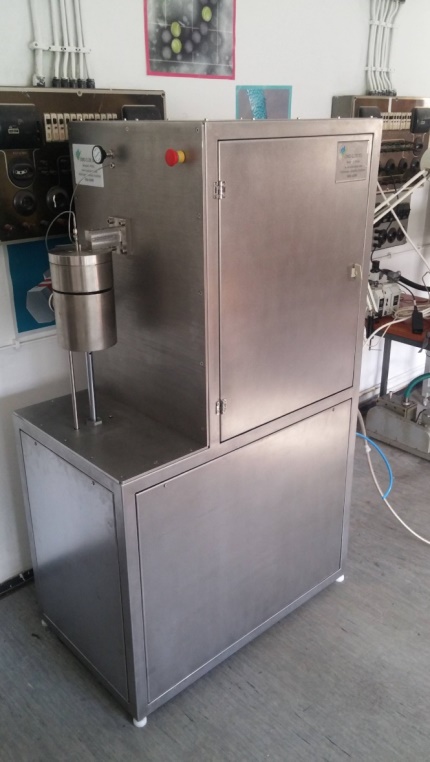
Mechanical milling method
The mechanical milling method is proved to be the best method for the synthesis of hydrogen storage materials, because in addition to the possibility of synthesizing metal and complex hydrides and their composites for various additives, it can be applied both at laboratory and industrial levels for the synthesis of large quantities of materials under already optimized conditions. In addition to the synthesis, mechanical milling also destabilizes the structure of the material by introducing various defects, reducing the particle size and crystallite, thus obtaining nanoparticles, as well as the uniform dispersion of additives that often have a catalytic function.
The laboratory will also conduct an analysis of hydrogen sorption on the HSA-UNLS device, made and developed in the cooperation of the Center’s associates Dr. Jasmina Grbović Novaković, Dr. Nikola Novaković, Dr. Sandra Kurko and Dr. Sanja Milošević Govedarović and the local company Uno-Lux NS.
Materials tested are hydrides, complex hydrides, amides, and various complexes and composites. The temperature range is 25-500ºC, and the pressure is from 1 to 30 bar. These properties of hydrogen storage materials define their practical application, and the goal is to obtain materials that reversibly absorb/desorb hydrogen in conditions as close to ambient and resistant to as many sorption cycles as possible.
In addition to hydrogen storage materials, the mechanochemical synthesis is suitable for the synthesis and milling of various powdered materials for energy applications. By varying the milling parameters, such as time, weight ratio of the mill balls and sample, as well as reactant concentrations, materials of different properties are obtained. The mechanical mill used in the laboratory is SPEX 5100 Mixer / Mill, a high-energy ball mill for milling speeds of 2500 rpm.
Combining the two modes of operation this analysis is one of the basic techniques of characterization of hydrogen storage materials . The first is the determination of isotherms of hydrogen sorption in the material under equilibrium conditions, from which it is possible to determine the thermodynamic parameters of a material. Also, these measurements,enable determination of the storage capacity of hydrogen, which is of great importance for the practical application of materials. Very important material characteristics are also the speed and cyclicity of the absorption/desorption process of hydrogen, which can be determined by recording kinetic curves of chare/discharge of the materials with hydrogen.
Associates
Dr Sandra Kurko
Dr Jasmina Grbović Novaković
Dr Igor Milanović
Dr Sanja Milošević Govedaravić
MSc. Tijana Pantić
MSc. Jelena Rmuš
Biljana Jovanović
